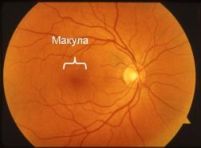
A wet form of Age-related Macular Degeneration affects macula (yellow spot) the central part of retina that is responsible for ability to read and see the most minor objects.
Reasons of vision loss: as the result of wrong nutrition in eye grounds tissues, new abnormal blood vessels start growing and leak blood and fluid. This leakage causes retinal scarring and irreversible loss of central vision.
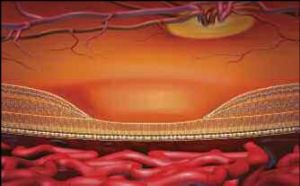
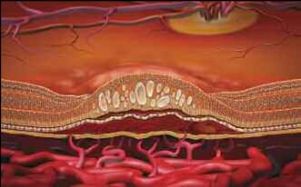
1. Human eye is a paired organ, and a healthy eye successfully takes the visual load of the other one, therefore dangerous symptoms may stay unnoticed.
2. AMD causes no pain that could show that something is wrong.
3. AMD does not cause a total vision loss. If both eyes are affected you can lose capability to work or have difficulties in your everyday life (driving, watching television, you may not be able to recognize faces, count the money, cross the street, one who suffers it loses independence, and has a mental disorder).
4. In a few weeks or months AMD may cause irreversible changes to retina.
5. The worse your vision is getting, the sooner you should visit ophthalmologist in a specialized clinic for examination and proper treatment.
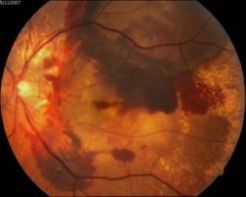
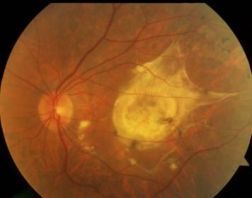
Perhaps you have noticed that your vision had become worse and letters fall out or lines become askew while you are reading, a spot may appear in front of your eye – these are serious signs meaning You should consult your ophthalmologist as soon as possible
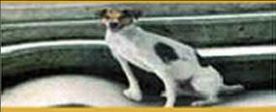
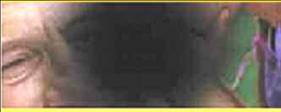


1. Age after 50;
2. hereditary background (macular degeneration among parents);
3. Smoking (6 times higher risk);
4. High blood pressure, nutrition problems.
Unfortunately, such a treatment is not efficient and often becomes the reason why patients go to the special medical centers, who have all the necessary equipment and knowledge for treatment of retinal disorders, later than needed.
There is no multi-central research information confirming efficiency of conservative treatment in case of wet age-related macular degeneration.
Timely laser coagulation just after new blood vessels were found outside the macular center can provide a highly functional result.
Laser coagulation of retina inevitably causes a thermal injury to the eye structures. It leads to a tissue dystrophy and locks down possibilities of using laser treatment for age related wet macular degeneration.
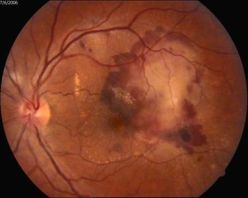
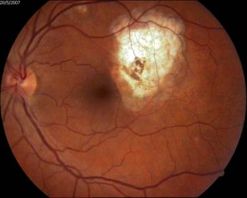
Photo dynamic therapy is a relatively new method of treatment using a photochemical effect on new blood vessels. A special medication is injected to a patient intravenously then the required part of the eye fundus is affected with a weak laser radiation which is not able to cause any harm to retina. The atomic oxygen is released as the result of the photochemical decomposition of the photosensitizer, this oxygen blocks the abnormal blood vessels and the retinal edema dissolves.
If compared to laser coagulation photodynamic therapy more gently effects the retina, and does not cause atrophy of the fundus membranes.
Recently, PDT is gradually replaced by angiogenesis inhibitors, which usually provide higher functional results. With some age-related retinal diseases (polypoid neovasculopathy) photodynamic therapy is more efficient.

1. Angiogenesis Inhibitors block the abnormal blood vessels and don't allow them to grow, that stimulates a quick recovery of visual acuity and helps retinal edema to dissolve.
2. Medication is painlessly injected into the eye using the thinnest needle in conditions of operation room.
3. Patient is examined once again in a month; medication is injected one more time if necessary. Usually, three injections are recommended, but if there is a good reaction after treatment, then one injection can be enough.
4. Multi-central researches confirmed a high long-term clinical efficiency and safety of using angiogenesis inhibitors and today they are included in national standards of age-related wet macular degeneration treatment in most European countries and the USA
Before AMD treatment, our doctors will certainly perform a full diagnostic examination of your organ of vision to determine the possibility of using an angiogenesis inhibitor.
1. ophthalmic infections 2. pain or reddening in the eye area 3. allergy to the medications that are being used (angiogenesis inhibitors, antibiotics, anesthetics)
Примите, пожалуйста, участие в опросе о качестве нашего сайта